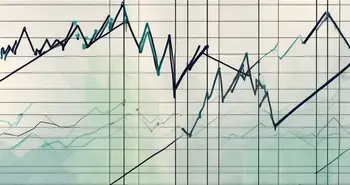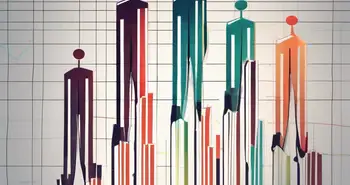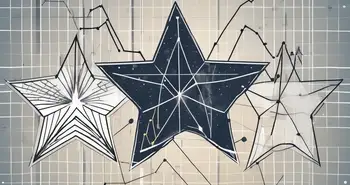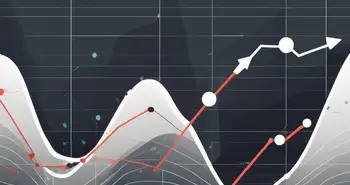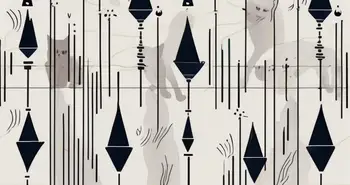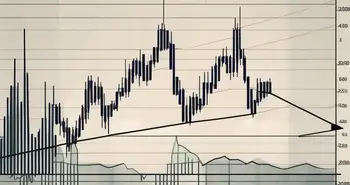Unlocking the Secrets of the Bearish Rectangle Pattern
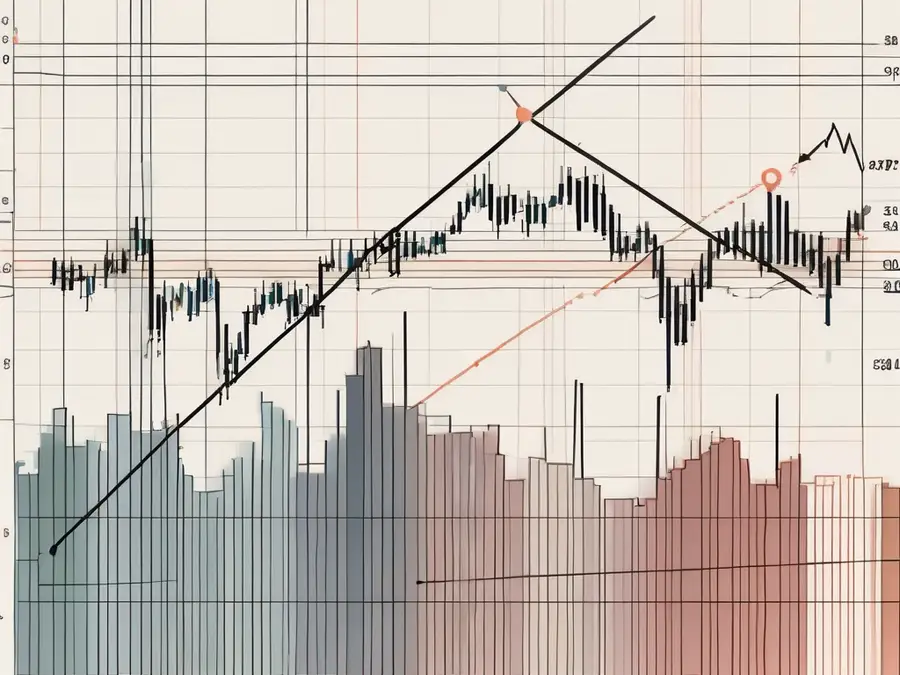
As a seasoned trader, I have had my fair share of encounters with various technical analysis patterns. Among them, the bearish rectangle pattern has always intrigued me. It is a powerful tool that can provide valuable insights into market trends and help identify potential trading opportunities. In this article, I will take you through the intricacies of this pattern, its characteristics, and how to effectively trade it.
Understanding the Bearish Rectangle Pattern
Before diving into the specifics, let's first define what exactly the bearish rectangle pattern is. In simple terms, it is a consolidation pattern that occurs during a downtrend. The pattern resembles a rectangle, with well-defined support acting as a horizontal boundary and resistance as an upper boundary. This formation suggests a temporary pause in the downtrend, potentially leading to a continuation of the downward move.
Now, you might wonder, why should you care about this pattern? Well, the answer lies in its significance in trading.
Defining the Bearish Rectangle Pattern
To better understand the bearish rectangle pattern, it's important to grasp its defining characteristics. Firstly, the pattern should have at least two well-defined touches on both the support and resistance levels, creating parallel lines. Secondly, the duration of the pattern should not exceed three months, as longer consolidations might introduce more uncertainty. Finally, the volume during the formation of the pattern should gradually decline, indicating decreased interest and potential exhaustion of sellers.
The Significance of the Bearish Rectangle Pattern in Trading
The bearish rectangle pattern holds significant implications for traders. It suggests that sellers are in control and that the market is consolidating before potentially resuming its downward trajectory. This pattern can be particularly useful for swing traders aiming to profit from short-term price movements.
Now, let me share a personal story that showcases the potential of the bearish rectangle pattern in action.
Personal Story: Last year, I was closely monitoring a tech stock that had been on a steady decline for several weeks. The chart exhibited a clear bearish rectangle pattern, with well-defined support and resistance levels. Seeing the decreasing volume and the price hovering near the support level, I decided it was a promising opportunity to short the stock.
As anticipated, the stock broke below the support level, confirming the bearish bias. I entered the trade and managed to capture a substantial profit as the stock resumed its downward move.
Understanding the bearish rectangle pattern is just the tip of the iceberg when it comes to technical analysis in trading. There are various other patterns and indicators that traders use to make informed decisions. It's important to note that no pattern or indicator guarantees success in trading, as the market is constantly evolving and unpredictable. However, having a solid understanding of different patterns can help traders identify potential opportunities and manage their risk effectively.
When utilizing the bearish rectangle pattern, it's crucial to consider other factors such as market conditions, news events, and overall trend. Combining multiple technical and fundamental analysis tools can provide a more comprehensive view of the market and increase the probability of successful trades.
Remember, trading involves risk, and it's essential to have a well-defined trading plan and risk management strategy in place. Continuously educating yourself, staying updated with market developments, and practicing disciplined trading can contribute to your growth as a trader.
Identifying the Bearish Rectangle Pattern
Now that you understand the significance of the bearish rectangle pattern, let's discuss how to effectively identify it.
Recognizing the bearish rectangle pattern in stock charts involves a keen eye for detail and a thorough understanding of its key characteristics. One of the primary features to look for is a well-defined downtrend that precedes the formation of the pattern. This downtrend sets the stage for the subsequent consolidation phase within the rectangle. As you analyze the price action, focus on identifying parallel support and resistance levels that encapsulate the trading range. These levels form the boundaries of the rectangle and play a crucial role in signaling potential bearish momentum.
Key Characteristics of the Bearish Rectangle Pattern
The key to correctly identifying the bearish rectangle pattern lies in its specific characteristics. Firstly, look for a clear downtrend preceding the pattern. This establishes the context for the consolidation. Then, observe the price action to determine whether it is forming a rectangle-like structure with parallel support and resistance levels. Lastly, pay attention to declining volume, as it indicates reduced activity in the market and potential exhaustion of sellers.
Adding to the complexity of pattern identification, traders must also consider the significance of declining volume during the formation of the bearish rectangle. A decrease in trading volume suggests a lack of conviction among market participants and may foreshadow a potential breakdown from the pattern. This decline in volume, coupled with the established downtrend and the formation of parallel boundaries, strengthens the validity of the bearish rectangle pattern.
Common Mistakes in Identifying the Pattern
While identifying the bearish rectangle pattern may seem straightforward, there are some common pitfalls to avoid. One mistake is misinterpreting a consolidation period as a bearish rectangle when it lacks the clear parallel boundaries. Another common error is neglecting to consider the context of the overall market trend, as the pattern is most reliable in a downtrending market.
Now, let's move on to the psychological aspects behind the bearish rectangle pattern.
The Psychology Behind the Bearish Rectangle Pattern
Understanding the psychology behind the bearish rectangle pattern can provide valuable insights into market sentiment and help you make informed trading decisions.
Investor Sentiment and the Bearish Rectangle Pattern
During the formation of a bearish rectangle pattern, investor sentiment plays a crucial role. As the price consolidates, fear and uncertainty grip sellers, resulting in decreased trading activity. This sentiment shift can be further reinforced by negative market news or economic indicators. Recognizing these psychological shifts can give you an edge in anticipating potential price movements.
Market Conditions and the Bearish Rectangle Pattern
Market conditions also influence the bearish rectangle pattern. In a volatile and uncertain market, the pattern may be more prevalent as investors seek refuge in consolidation zones. Conversely, in a strongly trending market, the pattern's significance may diminish as price movements become more decisive.
Now, let's turn our attention to strategies for effectively trading the bearish rectangle pattern.
Strategies for Trading the Bearish Rectangle Pattern
Successfully trading the bearish rectangle pattern requires a well-defined strategy. Here are some key considerations to keep in mind.
When to Enter a Trade with the Bearish Rectangle Pattern
Timing is crucial when entering a trade based on the bearish rectangle pattern. It is advisable to wait for a clear break below the support level, preferably accompanied by an increase in selling volume. This confirmation helps ensure that the pattern is indeed signaling a continuation of the downtrend.
Risk Management in Bearish Rectangle Pattern Trading
Like any trading strategy, risk management is paramount when trading the bearish rectangle pattern. Set appropriate stop-loss levels to limit potential losses in case of a false breakout. Additionally, consider implementing trailing stop orders to secure profits as the price continues to decline.
Now, let's compare the bearish rectangle pattern to other technical analysis patterns.
The Bearish Rectangle Pattern vs Other Technical Analysis Patterns
While the bearish rectangle pattern is a useful tool on its own, comparing it to other technical analysis patterns can provide additional insights. Let's explore some key comparisons.
Comparing the Bearish Rectangle Pattern and the Bullish Rectangle Pattern
The bearish and bullish rectangle patterns share similar characteristics, but they differ in their implications for market direction. While the bearish rectangle suggests a potential continuation of a downtrend, the bullish rectangle pattern indicates a pause in an uptrend and the possibility of an upward move. Recognizing both patterns enables traders to effectively capitalize on various market scenarios.
Strengths and Weaknesses of the Bearish Rectangle Pattern
Like any technical analysis pattern, the bearish rectangle pattern has its strengths and weaknesses. One of its notable strengths is its ability to provide a clear entry and exit strategy. The well-defined support and resistance levels allow traders to set precise stop-loss and take-profit orders. However, the pattern's reliability can be compromised in volatile markets, as false breakouts become more common.
Hopefully, this comprehensive guide has shed light on the secrets of the bearish rectangle pattern. By understanding its defining characteristics and incorporating effective trading strategies, you can unlock its full potential. Remember, practice and continuous analysis are key to harnessing the power of this pattern. So go forth, explore the markets, and embrace the opportunities that the bearish rectangle pattern presents.
Ready to put the bearish rectangle pattern into practice and experience a new era of trading? Join Morpher, the revolutionary platform where blockchain meets investing. With zero fees, infinite liquidity, and the ability to trade a vast array of assets—from stocks to sneakers—Morpher is designed for traders who demand innovation and flexibility. Whether you're looking to invest fractionally, short sell without interest fees, or leverage your trades up to 10x, Morpher has you covered. Plus, with the safety of a non-custodial wallet, you're always in control. Sign Up and Get Your Free Sign Up Bonus today, and transform the way you trade with Morpher.

Disclaimer: All investments involve risk, and the past performance of a security, industry, sector, market, financial product, trading strategy, or individual’s trading does not guarantee future results or returns. Investors are fully responsible for any investment decisions they make. Such decisions should be based solely on an evaluation of their financial circumstances, investment objectives, risk tolerance, and liquidity needs. This post does not constitute investment advice.

Painless trading for everyone
Hundreds of markets all in one place - Apple, Bitcoin, Gold, Watches, NFTs, Sneakers and so much more.

Painless trading for everyone
Hundreds of markets all in one place - Apple, Bitcoin, Gold, Watches, NFTs, Sneakers and so much more.

